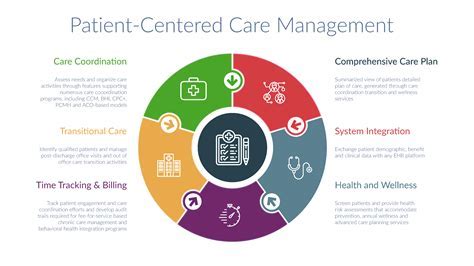Intro
Discover 5 ways Kaiser Permanente innovates healthcare with personalized medicine, digital health, and preventive care, enhancing patient experience and outcomes through integrated services and medical research.
Kaiser Permanente has been a leader in the healthcare industry for decades, known for its innovative approaches to medical care, patient satisfaction, and community involvement. With a commitment to providing high-quality, affordable healthcare to its members, Kaiser Permanente has established itself as a model for healthcare organizations around the world. In this article, we will explore five ways Kaiser Permanente is making a positive impact on the healthcare landscape.
Kaiser Permanente's approach to healthcare is centered around the idea of preventive care, emphasizing the importance of early intervention and disease prevention. By focusing on the root causes of health issues rather than just treating symptoms, Kaiser Permanente is able to provide more effective and efficient care to its members. This approach has led to significant improvements in patient outcomes and satisfaction, making Kaiser Permanente a leader in the healthcare industry.
The organization's commitment to innovation and technology has also been a key factor in its success. Kaiser Permanente has invested heavily in digital health technologies, such as telemedicine and electronic health records, to improve the patient experience and streamline care delivery. These innovations have enabled Kaiser Permanente to expand access to care, reduce costs, and enhance the overall quality of care provided to its members.
Introduction to Kaiser Permanente's Healthcare Model

Key Components of Kaiser Permanente's Healthcare Model
The key components of Kaiser Permanente's healthcare model include: * A focus on preventive care and early intervention * The use of digital health technologies to improve the patient experience and streamline care delivery * A commitment to patient-centered care, with a focus on the unique needs and preferences of each individual * A multidisciplinary approach to care, with teams of healthcare professionals working together to provide comprehensive care * A focus on community involvement and outreach, with a commitment to improving the health and well-being of the broader communityThe Benefits of Kaiser Permanente's Approach to Healthcare

Improving Health Outcomes through Preventive Care
Kaiser Permanente's focus on preventive care has led to significant improvements in health outcomes, including: * Reduced rates of chronic diseases such as diabetes and heart disease * Improved management of chronic conditions, with better control of symptoms and reduced risk of complications * Reduced risk of hospitalization and emergency department visits * Improved overall health and well-being, with increased quality of life and reduced healthcare costsKaiser Permanente's Commitment to Innovation and Technology

Examples of Kaiser Permanente's Innovative Technologies
Examples of Kaiser Permanente's innovative technologies include: * Telemedicine platforms, enabling patients to access care remotely and receive more convenient and accessible care * Electronic health records, providing patients with secure and convenient access to their medical information * Mobile health apps, enabling patients to track their health and wellness and receive personalized recommendations for improvement * Artificial intelligence and machine learning, enabling healthcare providers to analyze large datasets and identify patterns and trends in patient careKaiser Permanente's Focus on Patient-Centered Care

Key Principles of Patient-Centered Care
The key principles of patient-centered care include: * Respect for patients' autonomy and decision-making capacity * A focus on patients' unique needs and preferences * A commitment to communication and collaboration, with patients and families involved in the care process * A focus on patient education and empowerment, with patients equipped with the knowledge and skills to manage their own health * A commitment to cultural competence, with care tailored to the unique needs and preferences of diverse patient populationsKaiser Permanente's Community Involvement and Outreach

Examples of Kaiser Permanente's Community Involvement
Examples of Kaiser Permanente's community involvement include: * Partnerships with community organizations to address the social determinants of health, such as housing and food insecurity * Support for local health initiatives and programs, such as health fairs and screening events * Collaboration with schools and educational institutions to promote health education and wellness * Investment in community-based research and evaluation, to better understand the needs and preferences of diverse patient populationsConclusion and Next Steps

As we move forward, it is essential to continue to prioritize the needs of the patient, and to invest in innovative technologies and approaches that promote health equity and improve health outcomes. By working together, we can create a healthcare system that is more patient-centered, equitable, and effective, and that promotes the health and well-being of all individuals.
What is Kaiser Permanente's approach to healthcare?
+Kaiser Permanente's approach to healthcare is centered around the needs of the patient, with a focus on preventive care, innovation and technology, patient-centered care, and community involvement.
What are the benefits of Kaiser Permanente's approach to healthcare?
+The benefits of Kaiser Permanente's approach to healthcare include improved health outcomes, increased patient satisfaction, and reduced healthcare costs.
How does Kaiser Permanente use technology to improve patient care?
+Kaiser Permanente uses a range of digital health technologies, including telemedicine, electronic health records, and mobile health apps, to improve the patient experience and streamline care delivery.
